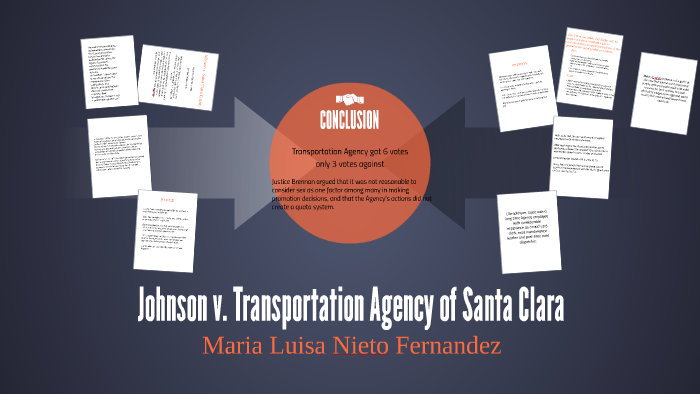In the world of employment law and affirmative action, few cases stir up as much conversation as Johnson vs. Transportation Agency, Santa Clara County. Decided in the bustling 1980s, specifically 1987, this case is a throwback but with a modern-day echo. It’s a story that pits two worthy job candidates against each other, under the watchful eyes of the U.S. Supreme Court, in a drama filled with gender, ambition, and the quest for workplace equality. Imagine the scene: Paul Johnson and Diane Joyce, both employees of the Transportation Agency in sunny Santa Clara County, California, locking horns over a promotion. Johnson, despite edging out slightly ahead in the evaluation process, lost the promotion to Joyce.

The twist? Joyce’s selection was swayed by the Agency’s affirmative action plan, aiming to level the playing field for women in a male-dominated space. Johnson cried foul, claiming he was side-lined due to his gender, sparking a legal battle that climbed all the way to the Supreme Court’s steps.
The question was juicy: Did the Agency’s affirmative action plan, which tipped the scales in Joyce’s favor, trample on Johnson’s rights under Title VII of the Civil Rights Act of 1964?
In a decision that had legal pundits on the edge of their seats, the Supreme Court, in a 6-3 ruling, backed the Transportation Agency. Justice Brennan, leading the charge, concluded that the affirmative action plan didn’t violate Title VII. Instead, it was a carefully crafted, temporary measure aimed at addressing the stark underrepresentation of women in certain job sectors.

The ripple effects of this decision were massive. It wasn’t just a win for Joyce or women in the workforce, but a green light for affirmative action policies that tackled gender disparities. The case laid down the law, quite literally, on how affirmative action could be implemented without crossing the line, setting a playbook for future gender equality initiatives. Fast forward to today, and Johnson vs. Transportation Agency still echoes in the halls of HR departments and courtrooms alike. It’s a testament to the complex dance between achieving workplace diversity and ensuring fair treatment for all.
So, while the 80s may be remembered for big hair and neon colors, in the legal world, it’s cases like this that truly made the decade standout. Johnson vs. Transportation Agency isn’t just a case study; it’s a narrative of progress, a chapter in the ongoing story of affirmative action and the quest for a balanced, fair workplace.
